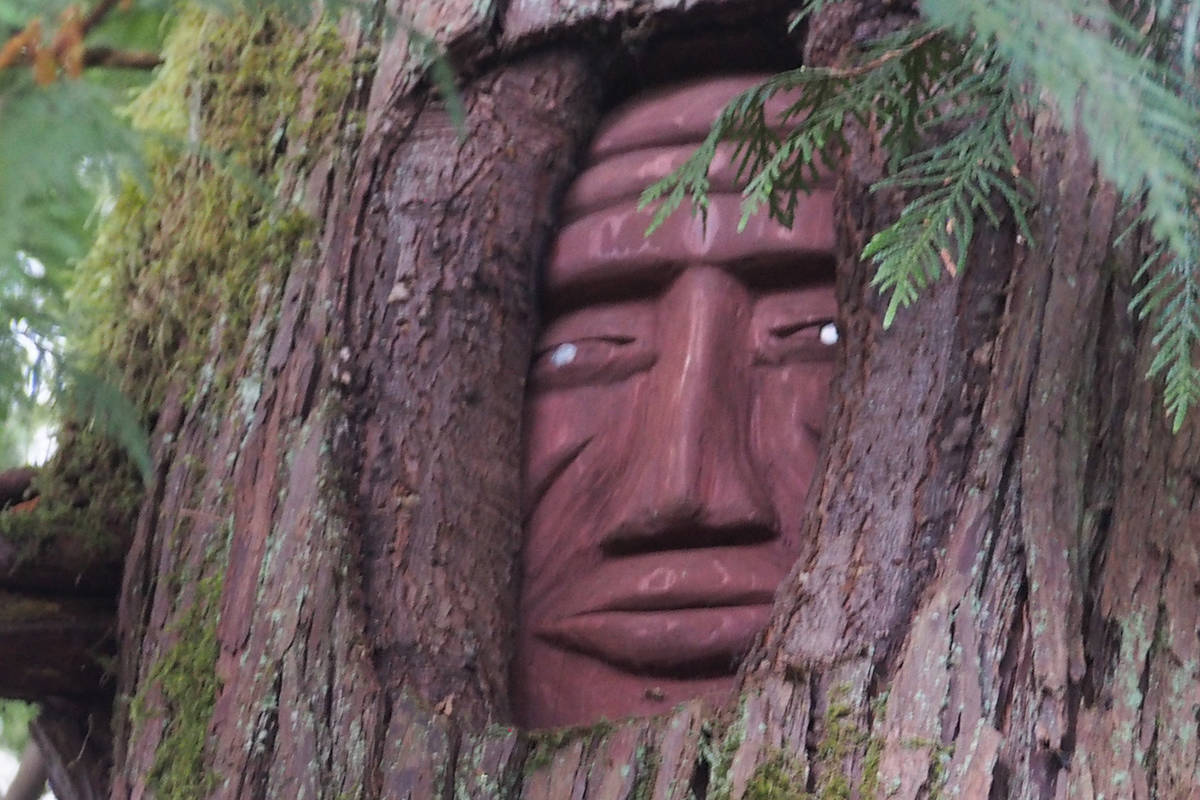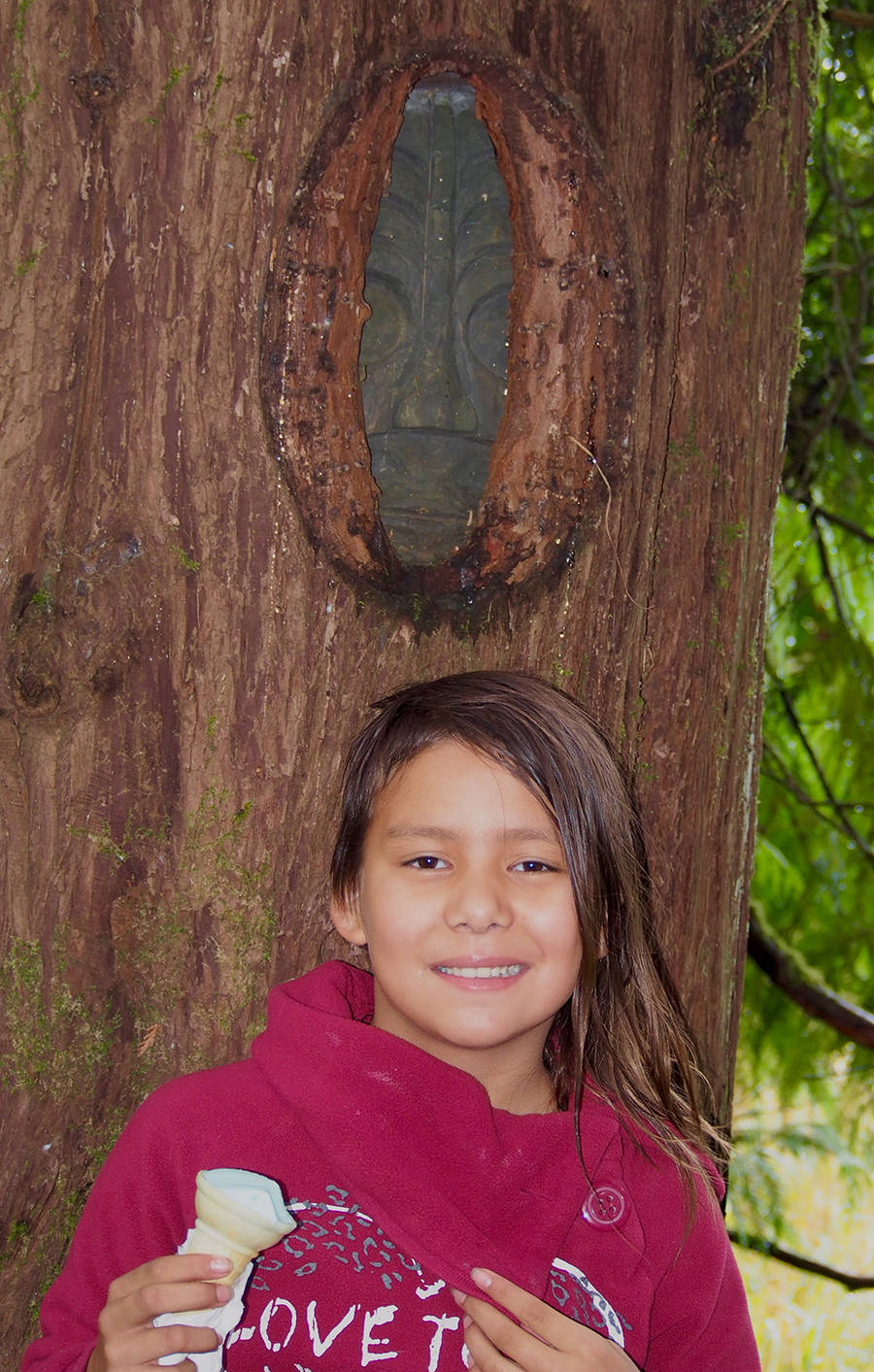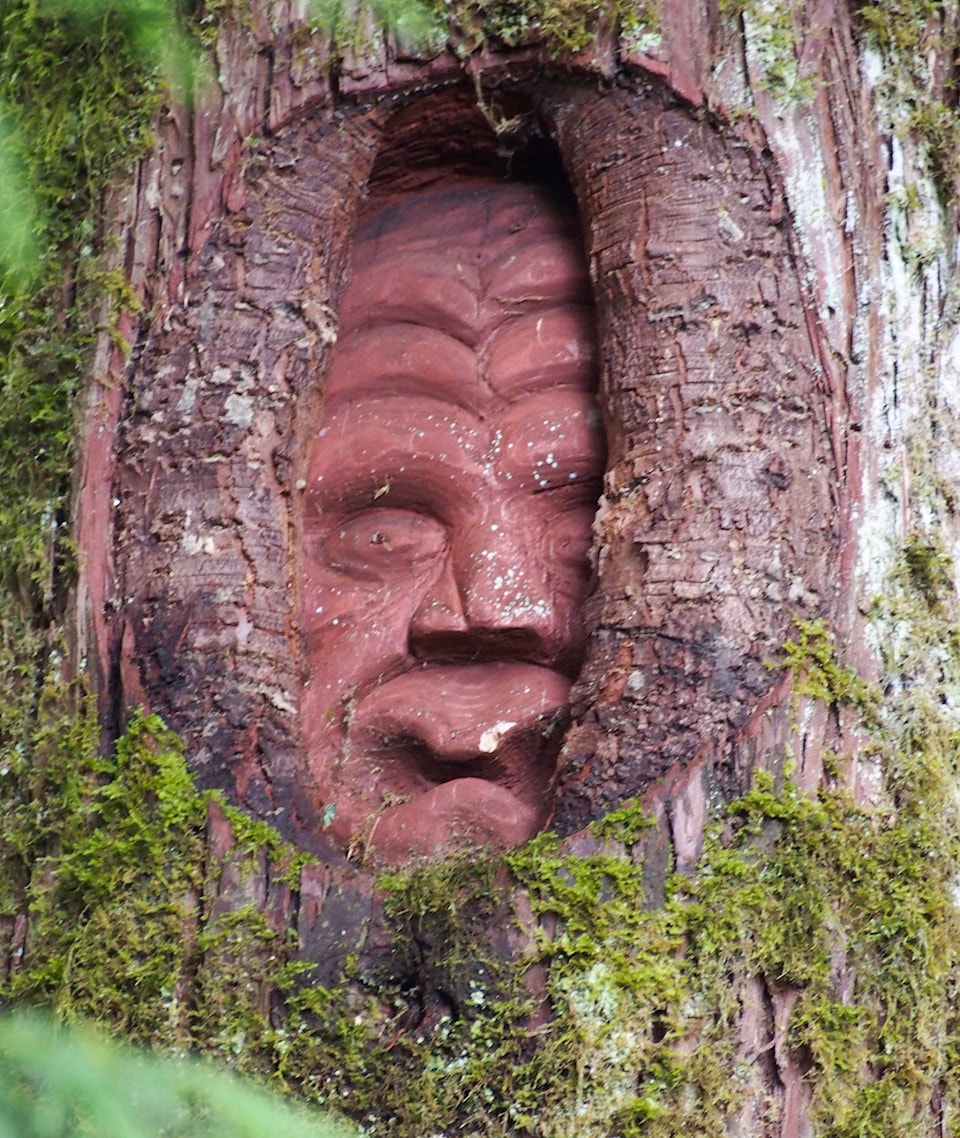MIKE YOUDS
SPECIAL TO THE NEWS
Six masks carved into living cedar trees along the Somass River a few kilometres west of Port Alberni draw upon Indigenous knowledge and beliefs to bring balance and well-being to the world.
The tree masks are located in a copse of mature cedars along the river foreshore at Arrowvale Farm, living landmarks that peer out at the world from behind curtains of bark.
Visitors who stop by at the farm cafe are directed to the carvings. It’s a short stroll down a path that weaves through green pasture and giant big leaf maples of immense girth to the river’s edge. The masks don’t exactly jump out at people; most are four metres up the trunks.
“The challenge is to find them,” said Anne Collins, who operates the agri-tourism operation with her husband Bob.
As Anne explained, the artwork is the inspiration of Mark Travis Smoke, an Iroquois carver who draws upon his Indigenous roots. In this case, it is the Iroquois spiritual custom referred to as False Face Masks, healing masks inspired by dreams. There is the Grandfather, the Smiling Face and the Crooked Face as well as the Blowing Face among them, facing east, west, north and south.
Smoke grew up in Niagara Falls, N.Y. — a member of the Lower Cayuga tribe of the Six Nations in Ontario — and always had a desire to travel west. He eventually worked his way to the west coast where he met his wife, Melanie, who is Nuu-chah-nulth from Ucluelet First Nation. They befriended the Collins while staying at Arrowvale Campground some years ago. The idea of creating the masks came up in conversation.
“We came up with the idea we’d do the Four Directions for medicine,” said Smoke, who now resides in Hazelton (Melanie’s maternal family is Gitxsan). They chose cedars, Nuu-chah-nulth sacred medicine, for that reason as well.
The carver’s idea was to blend Iroquois and Nuu-chah-nulth influences. While Nuu-chah-nulth carve masks from wood extracted from cedar trees, which they regard as sacred medicine, Iroquois carve masks within the trunks of living trees, basswood, maple, pine and poplar.
Living trees reinforce the life within the masks, Smoke said. Four of the masks represent the Four Directions, the four winds, medicinal elements common to North American Indigenous belief, two other masks face up and down the river.
The act of carving, along with the artwork itself, is a spiritual process. Edward (Tat) Tatoosh, the late Hupacasath elder, blessed the trees before carving began. After each tree was blessed, tobacco was burned to please the spirit.
Two weeks before he began chiselling, Smoke had a dream in which two of the masks appeared, a vision that gave him artistic direction. As he worked, he followed the Iroquois practice of praying to the spiritual forces in the mask. Carvers draw upon these forces to shape the masks.
RELATED: Language revitalization pole project runs out of money
RELATED: Victoria-based carver receives Order of B.C.
While the masks transcend modernity through a practice much older than the most ancient cedars still alive today, their appearance is fleeting in the lifespan of a cedar. They are human forms, visible to humans for a limited time only.
“We just got some pictures sent,” Smoke said. “One tree looks like it’s swallowing the mask.”
As nature would have it, the bark is closing in and will conceal the masks in a number of years. Though they might be described as ephemeral art — art that exists only for a short time — the masks will live on within the trees.
Smoke, who considers himself fortunate to have come to know many Gitxsan carvers since moving north, is glad to have left his mark in the Alberni Valley.
“It’s something I know I’m leaving behind,” he said.


